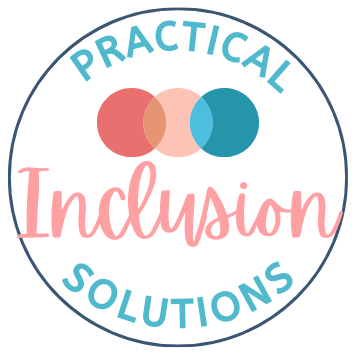Are you feeling overwhelmed by the thought of creating differentiated instruction in the inclusive classroom? You’re not alone! Many educators understand the importance of adapting their teaching methods but aren’t sure where to start. Let’s break it down.
What is Differentiated Instruction?
Differentiated instruction is a teaching approach designed to address the diverse needs of all students in a classroom. It involves adjusting content, processes, and products to fit varying abilities, learning styles, and interests. By offering multiple ways to engage with material and demonstrate understanding, differentiated instruction ensures every student gets the support they need to succeed and thrive.
5 Key Challenges and Practical Strategies
1. Balancing Diverse Needs
Challenge: Addressing a wide range of abilities, learning styles, and needs within a single lesson can be daunting. Here are three practical strategies to help:
✏️ Flexible Grouping: Group students by skills, interests, or learning styles for different activities. Rotate groups regularly to offer diverse experiences and peer interactions. For instance, use small group instruction for targeted support and interest-based groups for projects.
✏️ Tiered Assignments: Create assignments with varying levels of complexity. Ensure each tier challenges students appropriately based on their proficiency. For example, in a math lesson, provide basic, intermediate, and advanced problems to match different skill levels.
✏️ Choice Boards: Offer a variety of activities or projects related to the lesson. Allow students to select tasks that align with their interests and strengths. An example is providing options like creating a poster, writing an essay, or giving a presentation on a science topic. Consider using a Choice Board generator to save time.
2. Time Constraints
Challenge: Finding time for planning, creating materials, and assessing progress can be tough. Here’s how to manage it effectively:
✏️ Efficient Lesson Planning: Use templates and pre-made resources to streamline your planning. Tools like Canva offer customizable templates for lesson plans and materials (it’s also free for educators). Develop lesson plans that include differentiated activities within the same timeframe.
✏️ Incorporate Technology: Utilize educational technology to facilitate differentiation. Apps like Kahoot! for interactive quizzes or platforms like Lexia for individualized practice can help. These tools automate some aspects of assessment and allow simultaneous student participation at their specific levels. Check out our previous post on assistive technology to learn more about that aspect as well.
✏️ Collaborative Planning: Partner with colleagues to share planning duties and resources. Join or form a Professional Learning Community (PLC) to develop and share differentiated lesson plans and strategies.
3. Limited Resources
Challenge: Constraints with materials, technology, and support staff can hinder effective differentiation. Try these solutions:
✏️ Creative Use of Existing Resources: Adapt and modify available resources to meet diverse needs. For example, repurpose textbooks, use online resources, or adjust reading materials to different levels.
✏️ Community and Parent Support: Build relationships with families and community members. Seek volunteers, donated materials, or local expertise. Create an Amazon Wishlist for materials or invite local experts to guest lecture.
✏️ Peer Tutoring: Pair students of different skill levels for peer tutoring. This not only provides support but also fosters learning among peers. Be sure to promote a positive and inclusive environment to prevent any negative dynamics.
4. Classroom Management
Challenge: Managing a classroom with varying tasks and levels requires effective strategies. Consider these approaches:
✏️ Establish Clear Routines: Develop consistent routines for transitions and activities. Use visual schedules and timers to help students stay organized and focused.
✏️ Use Classroom Zones: Designate areas for specific activities, such as independent work, group work, and quiet reading. This helps manage student tasks and maintains organization. You can read more about classroom zones in our post about classroom organization.
✏️ Behavior Management Systems: Implement systems like behavior charts or reward systems to encourage positive behavior and maintain a productive environment. Tools like ClassDojo can also help track and reinforce good behavior.
5. Assessment and Feedback
Challenge: Providing meaningful assessment and feedback requires multiple strategies. Here’s how to approach it:
✏️ Formative Assessments: Regularly use informal assessments like quizzes, exit tickets, or quick polls to gauge understanding and adjust instruction as needed.
✏️ Rubrics with Clear Criteria: Develop and share rubrics that outline performance criteria. This helps students understand expectations and provides objective assessment. Use online rubric generators to save time.
✏️ Timely and Specific Feedback: Offer feedback that is actionable and specific. Highlight strengths and areas for improvement to guide student progress. For example, provide detailed feedback after projects to suggest specific improvements.
Conclusion
Differentiating instruction can be challenging, but with these practical strategies, you can create a more inclusive and effective learning environment. Remember, effective differentiation often involves ongoing professional development, collaboration, and support from your school.
Want more information? Check out our FREE video training on practical ways to differentiate instruction. This training gives concrete examples of differentiation for busy, overwhelmed teachers!
For more insights, check out these additional resources:
⭐️ How to Differentiate Instruction in Academically Diverse Classrooms
⭐️ What is Differentiated Instruction? Examples of How to Differentiate Instruction in the Classroom
Are you using differentiated instruction in your classroom? Share your experiences or challenges in the comments below, or connect with us on Instagram @practicalinclusionsolutions!
